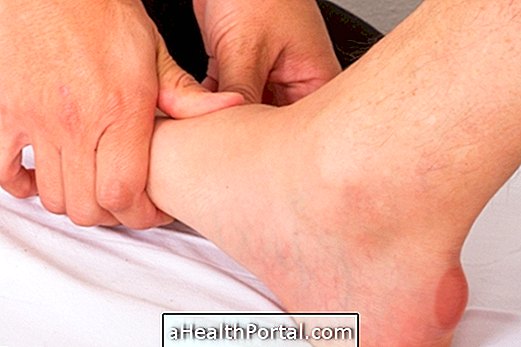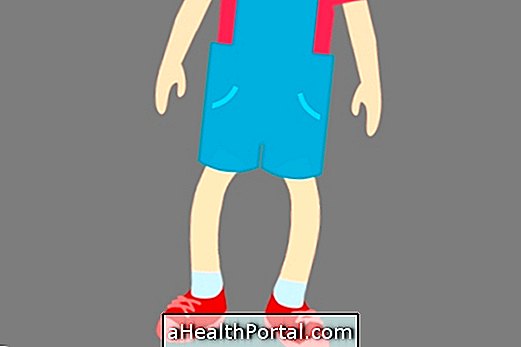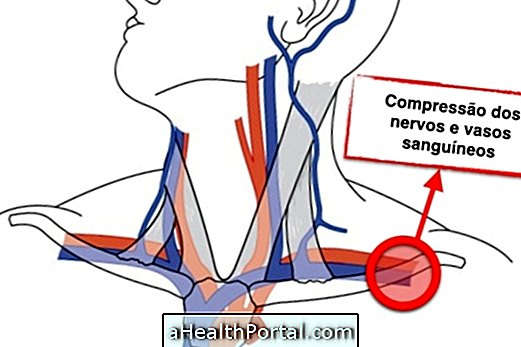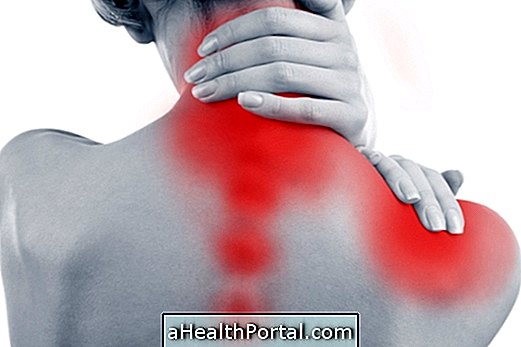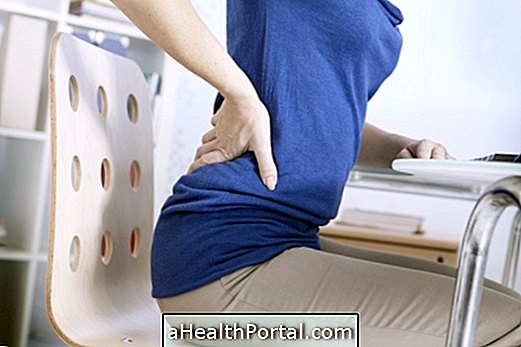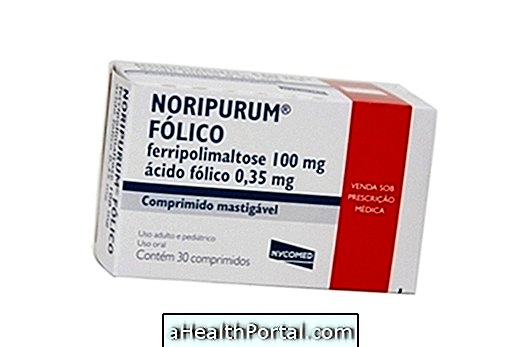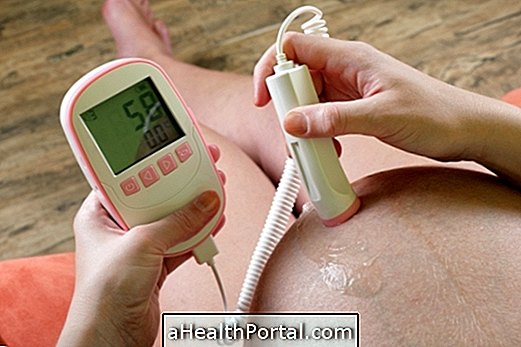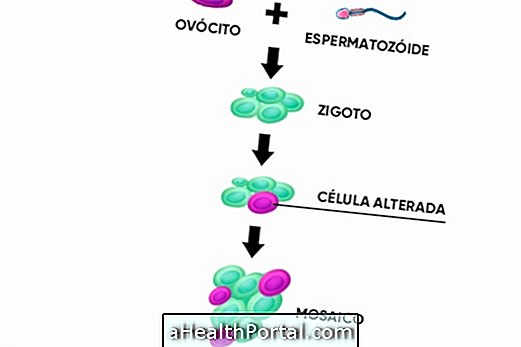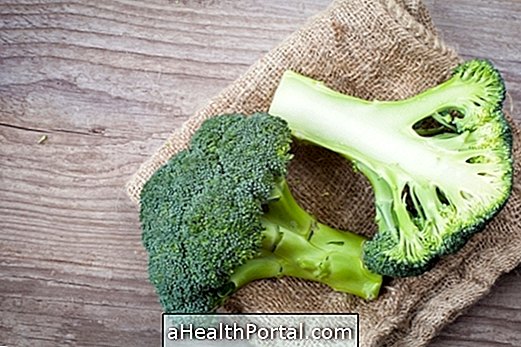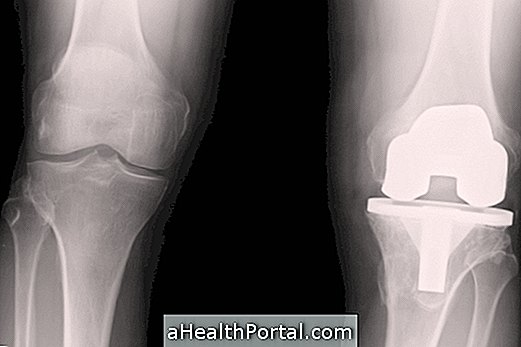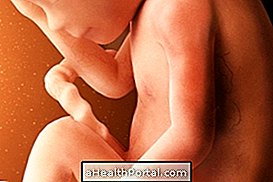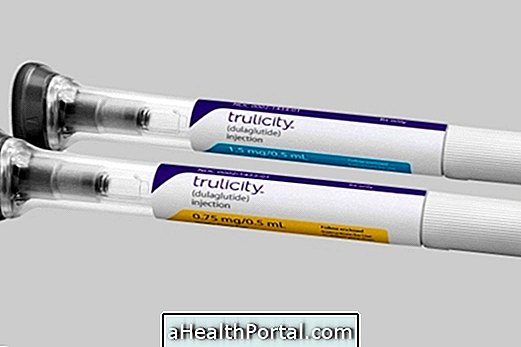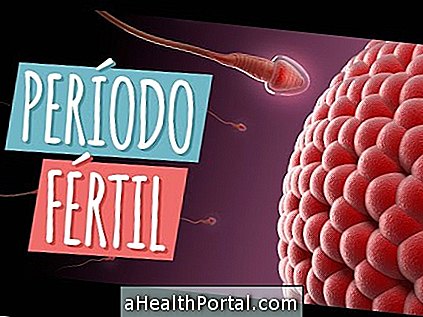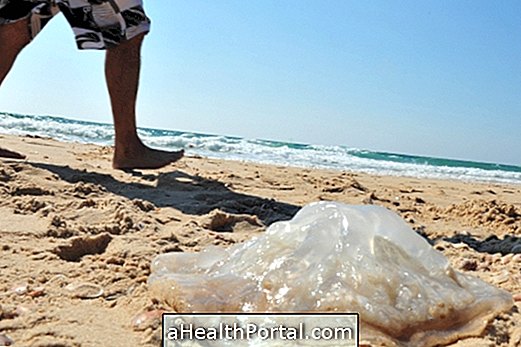The lateral epicondylitis, or tennis elbow, is an inflammation of the tendons of the extensor muscles of the wrist caused by the repetitive effort of these muscles, being more common from the 30 years of age.
This injury is more common in workers who perform very repetitive movements in their daily lives, such as who needs to type, write or draw, but it also affects people who train in the gym more than 5 times a week and tennis players.
The lateral epicondylitis has a cure and its treatment must be done with the combination of remedies and physiotherapy, and, in the most serious cases, may also include surgery. Only about 20% require surgical treatment.
Symptoms of lateral epicondylitis
![]()
Symptoms of lateral epicondylitis may arise with no apparent cause and include:
- Pain in the elbow, located more specifically in the outer part when the hand is turned upwards. The pain appears or worsens in a handshake, when opening the door, combing hair, writing or typing. The pain may radiate to the forearm.
- Decreased strength in the arm or wrist, being difficult to hold a glass of water for more than 1 minute.
Symptoms appear gradually over weeks or months and should be evaluated by general practitioners or orthopedic physicians, or by the physical therapist who may also be diagnosed.
Treatment for lateral epicondylitis
Treatment for lateral epicondylitis may last from 8 weeks to a few months and is usually done with:
- Physiotherapy that includes stretching exercises, cold massage and electrical stimulation of muscles;
- Use of a tape on the forearm, called a kinesio tape, to restrict the movement of affected muscles and tendons;
- Acupuncture can also be indicated, bringing pain relief;
- Anti-inflammatory medicines, such as Ibuprofen, for a maximum of 7 days, apply ointment like Diclofenac daily, in cases where treatment does not decrease symptoms, the doctor may still prescribe corticosteroid injections.
During the treatment, it is recommended to rest the activities that triggered the pain, so it is advisable to slow the pace of training in the gym and avoid doing sports like tennis, golf, volleyball or handball for example.
Physical therapy can help control pain and improve movement and should be indicated by the physiotherapist. Some features that can be used are inflammation-fighting equipment, such as tension, ultrasound, laser, shock waves and iontophoresis. Using ice packs and strengthening and stretching exercises, as well as transverse massage techniques are also helpful in accelerating healing.
Shock wave therapy is particularly indicated when epicondylitis is chronic and persists for more than 6 months without improvement with medications, physiotherapy and rest.
Here's how to do this massage properly and how the nutrition can help in the following video:
![]()
In more severe cases or when symptoms last longer than 1 year, even after starting treatment, surgery may be indicated for epicondylitis.
